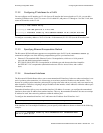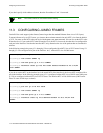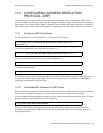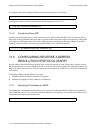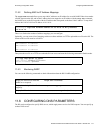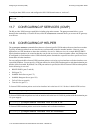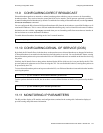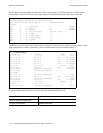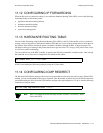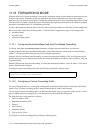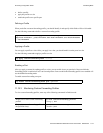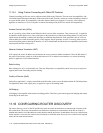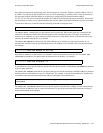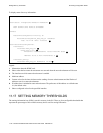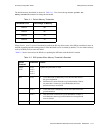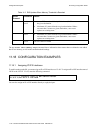
Riverstone Networks RS Switch Router User Guide Release 8.0 11-11
IP Routing Configuration Guide Configuring IP Forwarding
11.12 CONFIGURING IP FORWARDING
When the RS receives a packet for routing, it uses either the Hardware Routing Table (HRT) or one of the following
forwarding modes to forward the packet:
•
application-based forwarding (default)
•
destination-based forwarding
•
host-flow-based forwarding
•
custom forwarding profile
11.13 HARDWARE ROUTING TABLE
You can enable forwarding using the Hardware Routing Table (HRT) on the RS. When the RS receives a packet for
routing, it retrieves the packet’s destination IP address (DIP) and uses a series of three lookup tables to locate the next
hop address. If the RS does not find the packet’s destination IP address through the HRT, it drops the packet. The
advantage of this type of routing is that packets almost never get sent to the CPU, using up CPU process time, except
in a few cases such as multicasting.
You can enable the use of the HRT on the RS, by entering the following command in Configure mode. After entering
the command, save it to the active configuration file and reboot the system.
If HRT is not enabled, the RS routes packets by using the L3 flow tables.
11.14 CONFIGURING ICMP REDIRECT
The RS sends ICMP redirect messages when it receives packets that have the same entry and exit ports. When HRT is
enabled, you can set a threshold for these types of packets. Once the number of packets received by the RS reaches the
specified threshold, the RS will send an ICMP redirect message to the originating device. To do so, enter the following
command in Configure mode:.
Note
HRT is not supported on the following modules: ATM-OC3, ATM-OC12, HSSI,
Serial and CMTS.
hrt enable slot <slot number>|all
hrt set icmp icmp-redirect-count <number>



